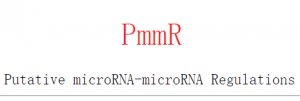Status:
Platform:
Implement Technique:
Species:
To date, a significant amount of research has been conducted for computational modeling of the microRNA (miRNA)-target gene interactions and inferring different kinds of biologically relevant association from their variable expressions, available from microarray experiments. However, topological organization of the miRNA-transcription factor (TF) induced regulatory network has not yet been analyzed at a genome scale. Evidently, by ignoring the regulatory relationship among the constituent molecules, we expose our model to a great deal of noise. Besides this, the miRNA-TF regulatory network also helps extract a putative set of regulations among miRNAs and hypothesize the miRNA-miRNA regulatory network. We constructed the miRNA and TF induced regulatory network for humans by combining all possible regulations between miRNAs and TFs. Topological analysis of the network revealed some of its non-trivial and intrinsic properties. The concept of topological overlap has been extended to formulate a novel dissimilarity measure that is capable of mining groups of closely interacting molecules from a weighted digraph such that the molecules in each group regulate each other to a large extent. Many of the identified TF modules are found to be enriched in different functional categories. On the other hand, many of the identified miRNA modules displayed significant associations with common diseases. Finally, the miRNA-TF induced regulatory network yields a putative miRNA inter-regulatory network which may be considered as the first step towards the understanding of the regulatory relationship amongst miRNAs. A large number of the validated regulations were found in the predicted set of regulations, having a significantly high average score. A web application is created to facilitate the search of the Putative miRNA-miRNA Regulations (PmmR). It can be accessed through the following link: .[1]
References
- Participation of microRNAs in human interactome: extraction of microRNA-microRNA regulations.,
, Mol Biosyst, 2011 Jun, Volume 7, Issue 6, p.1966-73, (2011)







